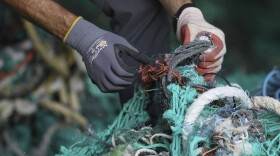A University of Hawai'i at M?noa researcher is making the scientific case for Hawai'i being the “rainbow capital of the world.”
Steven Businger’s paper in the Bulletin of the American Meteorological Society is titled “The Secrets of the Best Rainbows on Earth.”
Businger appeared Thursday on The Conversation, and you can hear him again on NPR's Science Friday.
Businger told Science Friday that Hawai'i has relatively clean air that produces brighter sunshine than on the mainland, combined with the trade winds that bring in isolated rain showers.
"You need to have rain falling out of relatively isolated showers with lots of ability for the sunshine to get in on the side," he said. "And another thing that we have in Hawai'i is mountains and the mountains enhance those showers.
"As the air comes down on the lee side, it causes the cloud to evaporate and have sunshine," he added. "So, in the town of Honolulu, which is on the lee side, you look back toward the mountain in the afternoon and there are lots and lots of these showers causing rainbows."
Businger's paper also references the cultural importance of rainbows, which is reflected in the Hawaiian language and culture.
Listen to the full interview at 1 p.m. on Science Friday on HPR-1.
Read Businger's full research paper here.




